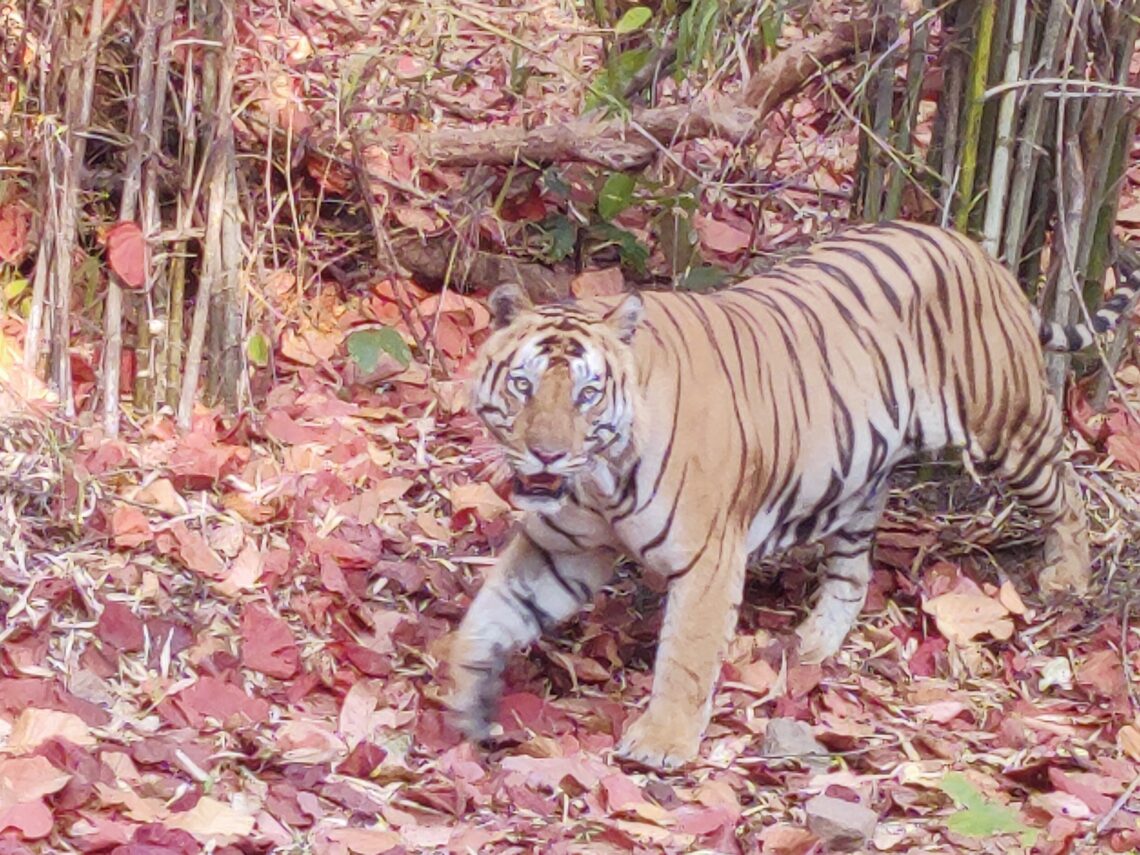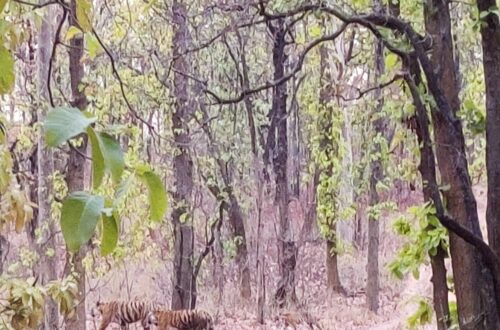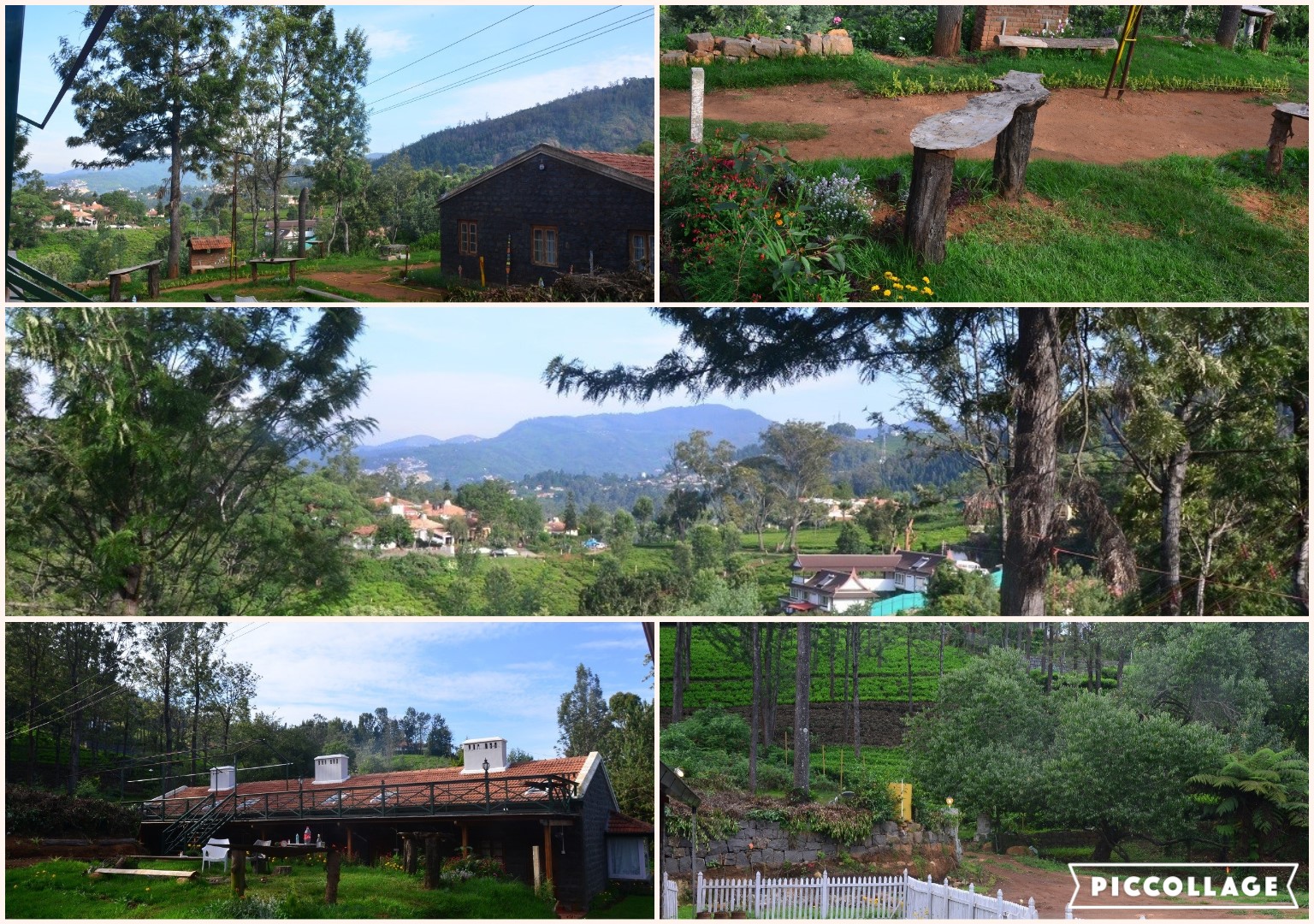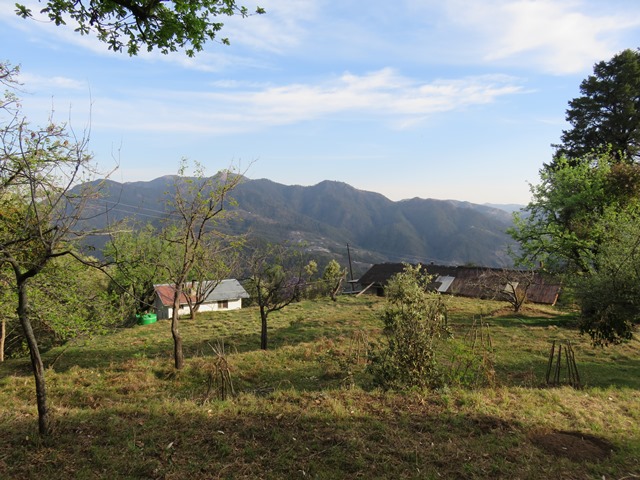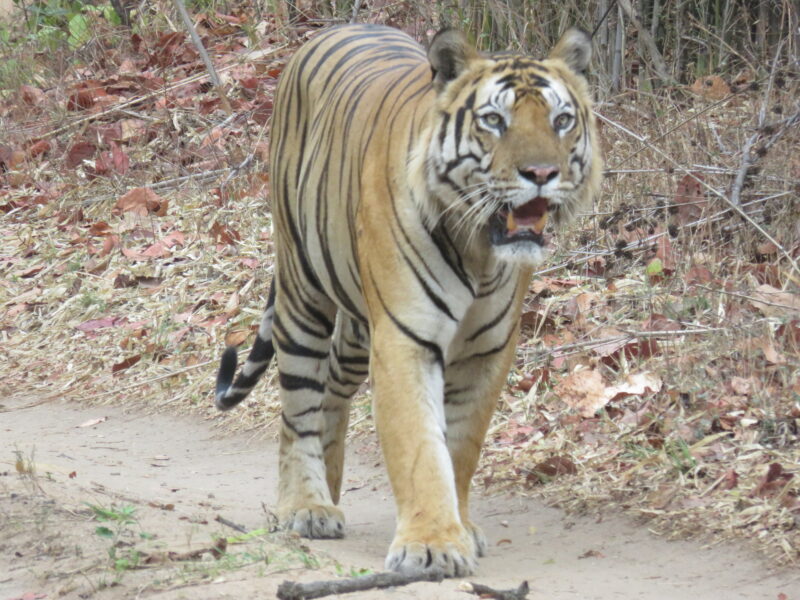
It was as if we were listening to the history of empires in the past—son killing/maiming father, then his son doing the same, and so on. With the apt background noise of an unexpected thunderstorm, Mandar (of Nature India) was talking to us about the history of current tigers in the Bandhavgarh forest, a bunch of us listening as eagerly as we were for the next day’s jungle safari. But our comparison of tigers with bloody empires is not right. These majestic kings of forests act not out of malice but by instinct. They don’t make cunning plans to satisfy their greed but behave the only way they know to ensure own survival.
The story goes like this: Banka, the then dominant male tiger, and his mate Sita were living happily in Banka’s territory, Chakradhara, and Sita raising a few litters with Banka. They were used to seeing safari Gypsies and didn’t mind the vehicles coming closer. One night, the forest guards heard growls and other sounds of ferocious fighting. A change of guard occurred that night. Without realising this, next day’s safari vehicles came close to the tiger they spotted but the tiger charged at them. Later, Banka was found injured, and the new massive tiger came to be called Charger, because of his continued habit of mock-charging at the safari vehicles.
Charger and Sita then became the celebrated couple of Bandhavgarh; most of the current tigers in Bandhavgarh can call this couple their ancestors.
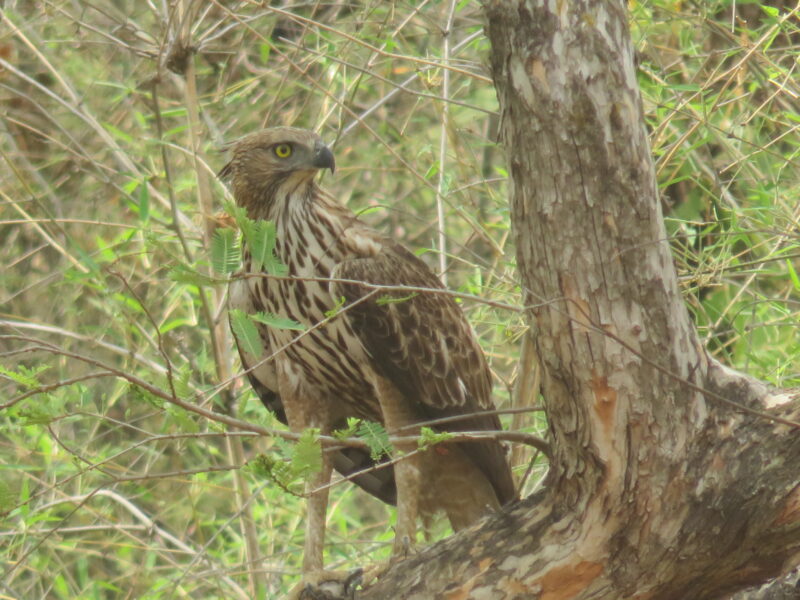
Bandhavgarh Tiger Reserve in Madhya Pradesh has been on our wish list for many years. Though it was not difficult to do this trip, it never happened until this May. There is a time for everything! This came true when Nature India announced their 2024 Bandhavgarh trip, with the bonus of their first-time trip Sanjay Tiger Reserve, also in Madhya Pradesh. Seven safaris in four days!
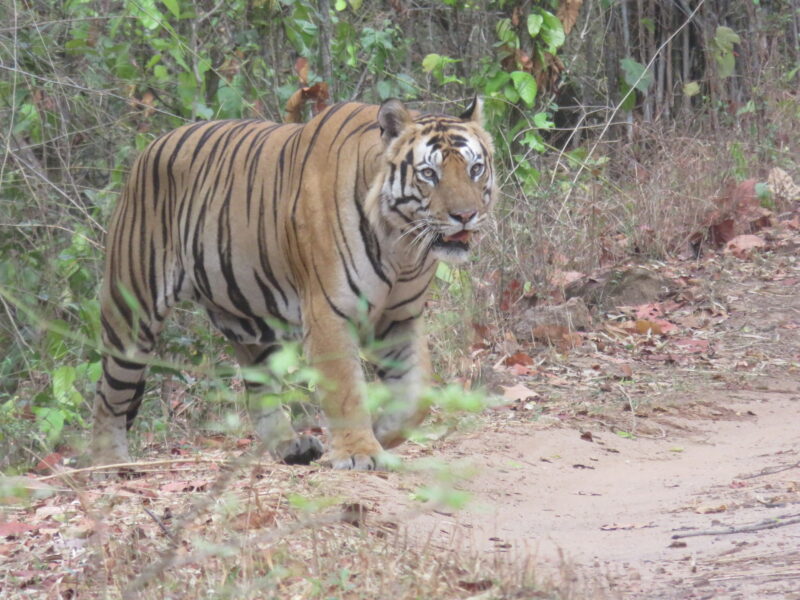
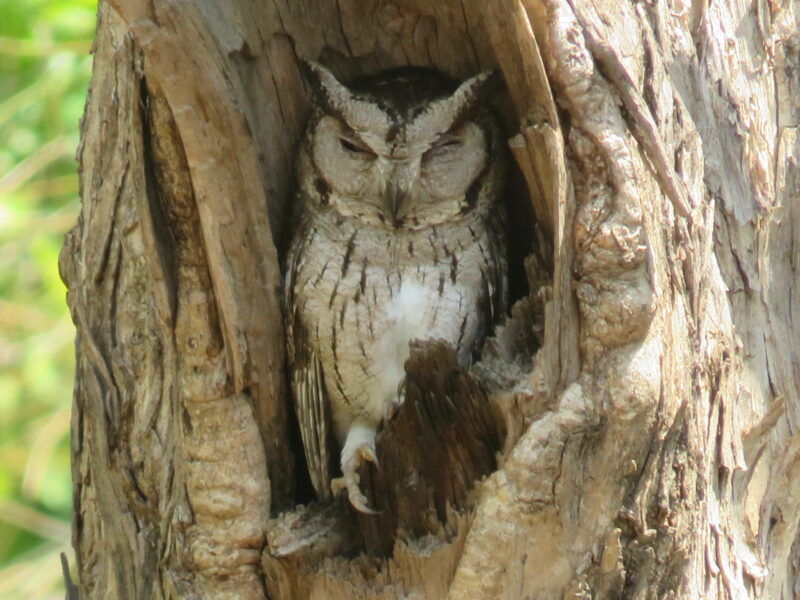
Sal and bamboo trees dominate Bandhavgarh forest, with varied terrains of grasslands, ridges, hills, and plateaus. Our first safari was to the Khitauli range. A bit disappointing because even though we sighted Pujari and D1, they were napping at a distance. Our group members in the other Gypsy got a better view of Pujari, doing his signature stretching gestures that earned him his name. After the previous day’s rain, the weather was too wonderful (for a central Indian summer) and we blamed it on the good weather for the lack of tigers roaming the roads. And bad luck, too.
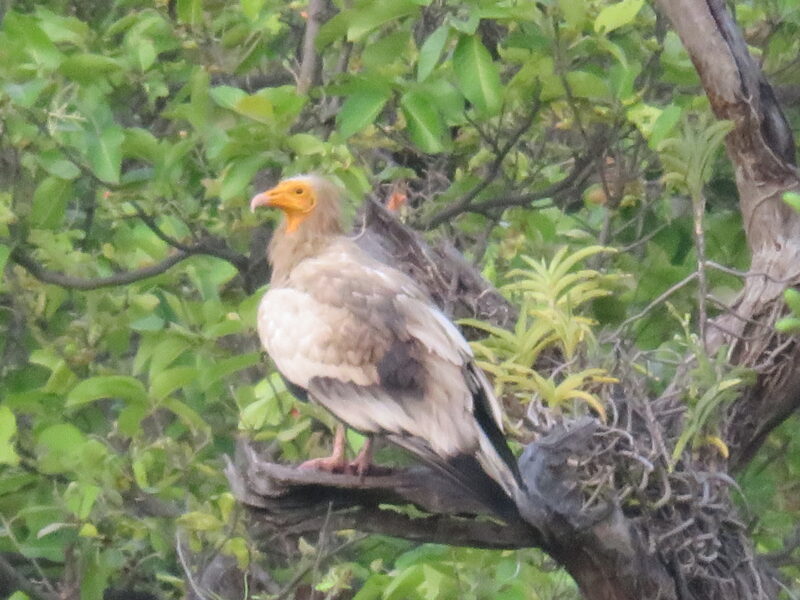
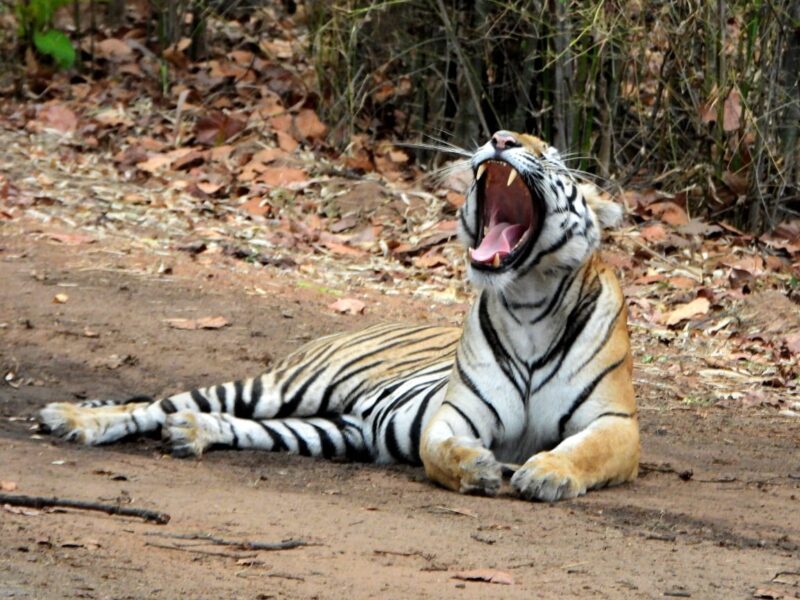
Same day’s evening safari to Magdhi zone brought us close to Sundari, and that too for an hour or so. True to her name, this beautiful sub-adult tigress was just lying on the road, at a T-junction, alternatively napping and grooming, changing positions a few times as if posing for the numerous cameras on all three sides. We waited till she walked away.
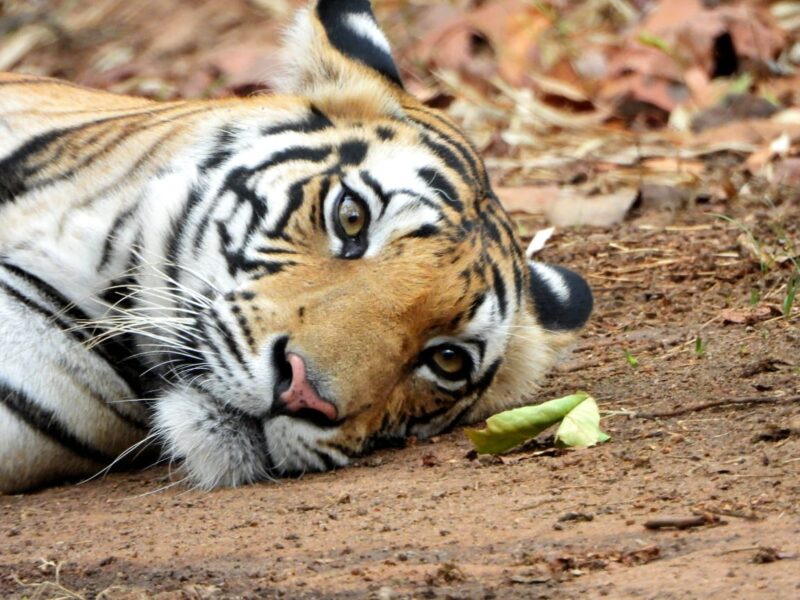
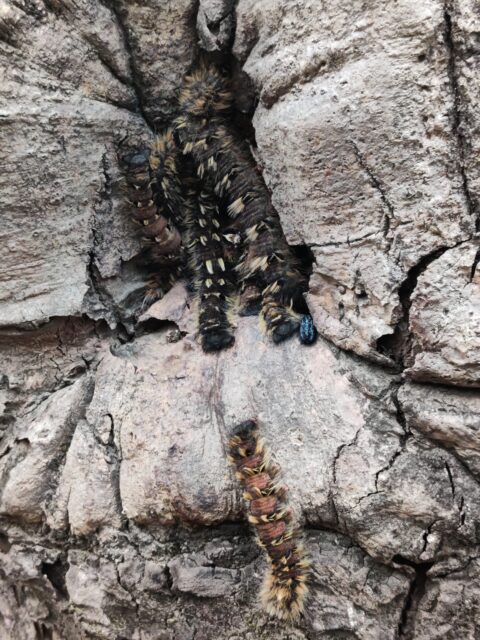
Spotted these moth caterpillars on a tree next to our Gypsy as we waited for Sundari to move.
Next day’s luck started with Chakradhara female and her two cubs in the Tala zone, munching on the last of a kill, though they were at a considerable distance in the woods. As we moved further down the road, Bajrang strolled towards us. After that, it was several minutes of pure excitement, mingled with fear, as this massive, magnificent tiger made his way forward, presumably to his mate and cubs. He was nonchalant about the vehicles and incessant clicking of cameras. Whenever he found vehicles ahead in his path, he just entered the forest and came back out where the road was clear.
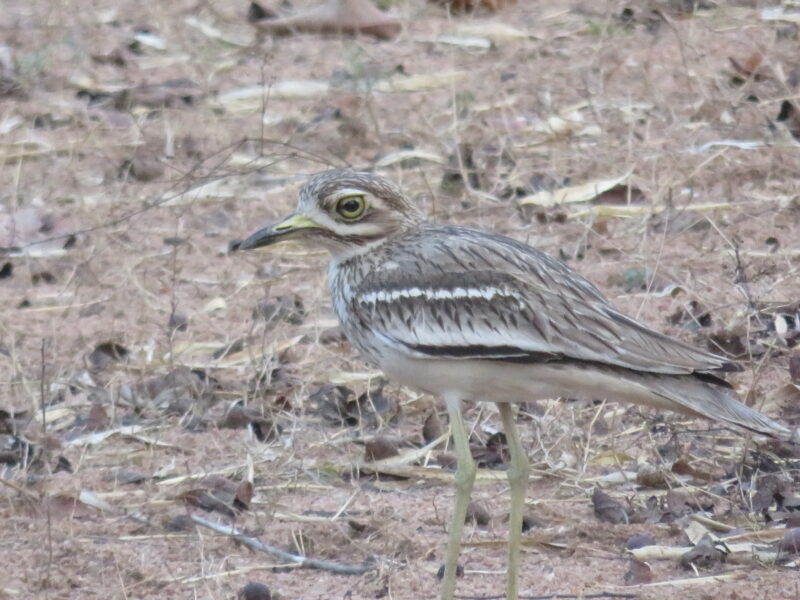
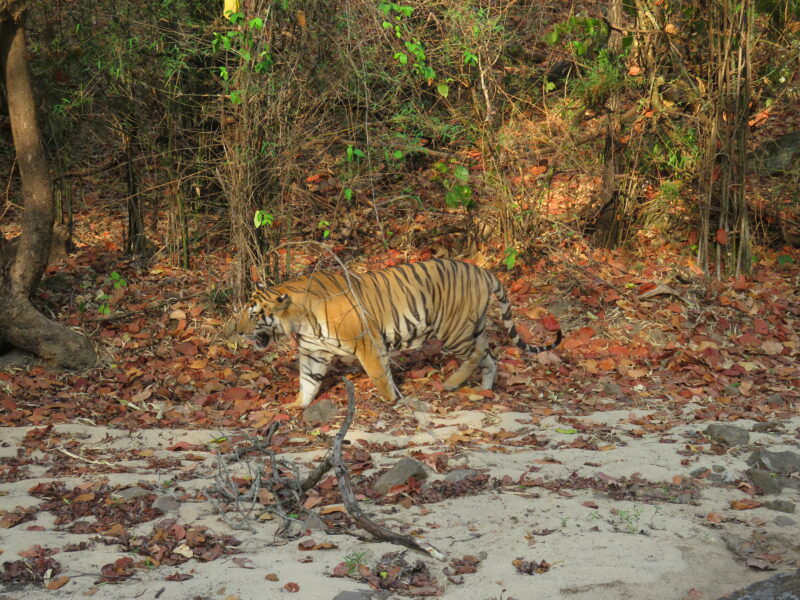
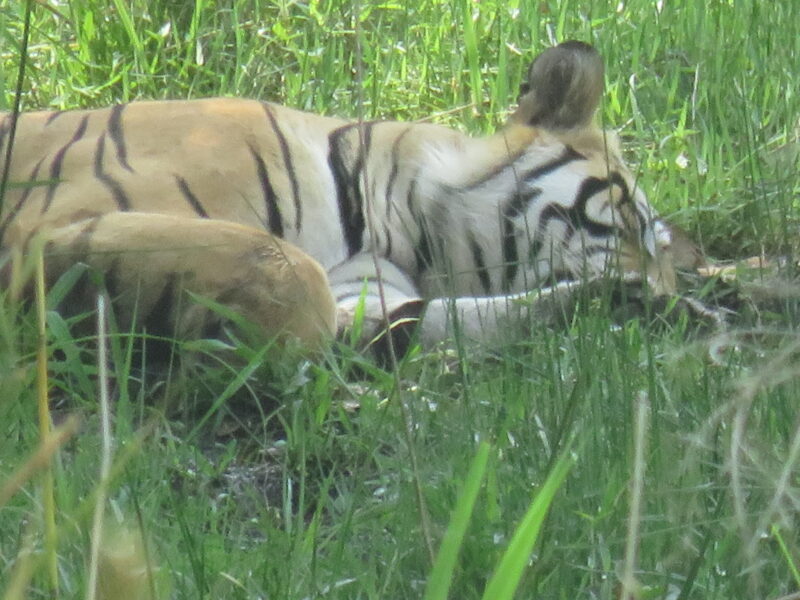
As he went deep into the forest, all the vehicles rushed to the plateau that overlooks Sita Mandap, a rocky pool named after the matriarch, Sita, in the hope of the family of tigers coming there for drinking water. But it was not to be! All left disappointed after a long wait.
Chota Bheem, lying somewhat deep in the forest, and D1, cooling himself in the lake, were the highlights of the last safari of our trip, again in Khitauli zone.
Tigers always steal the limelight, and of course, not able to sight one brings disappointment. Even safaris with no tiger sighting can be memorable if the guide and driver are enthusiastic and knowledgeable about the forest and all wildlife. This, being a Nature India trip, we knew this will be the case. Apart from Mandar, we had wonderful drivers Saleem bhai and Pankaj, and the forest guides (who accompanied us each time), we got to see several other animals and birds, too, and click some.
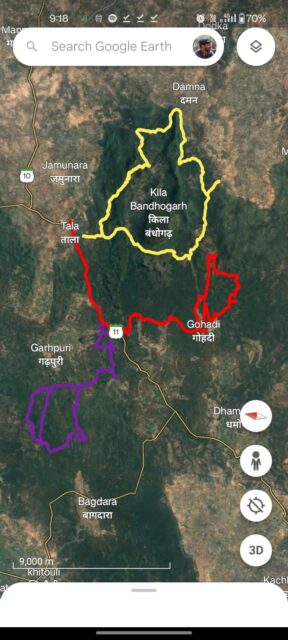
Wild elephants used to migrate from Chhattisgarh and return; now a few of them have made Bandhavgarh their home.
Jungle owlet, green bee eater, blue-bearded green bee eater, lesser adjutant stork, Indian pitta, Indian grey hornbill, black-hooded oriole, golden oriole, paradise flycatcher (swishing among the trees with its long tail, never sitting long enough for a click), white-eyed buzzard, oriental honey buzzard, Tickell’s blue flycatcher, Indian thick-knee, black-naped blue monarch, changeable hawk eagle, and Egyptian vulture are just a few of the many birds we spotted with help of Mandar, Pankaj, Saleem bhai, and guides.
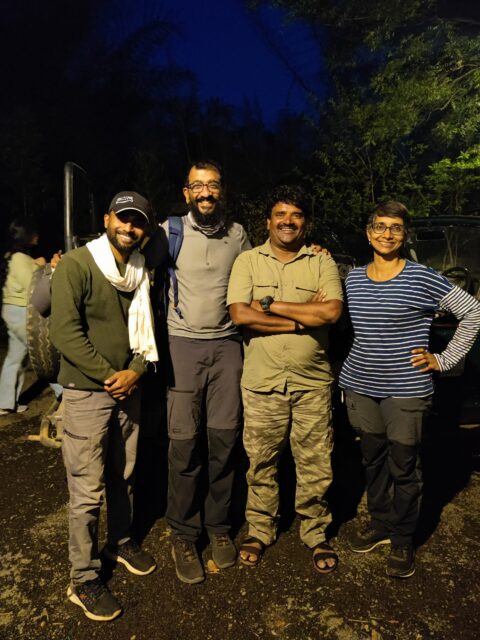
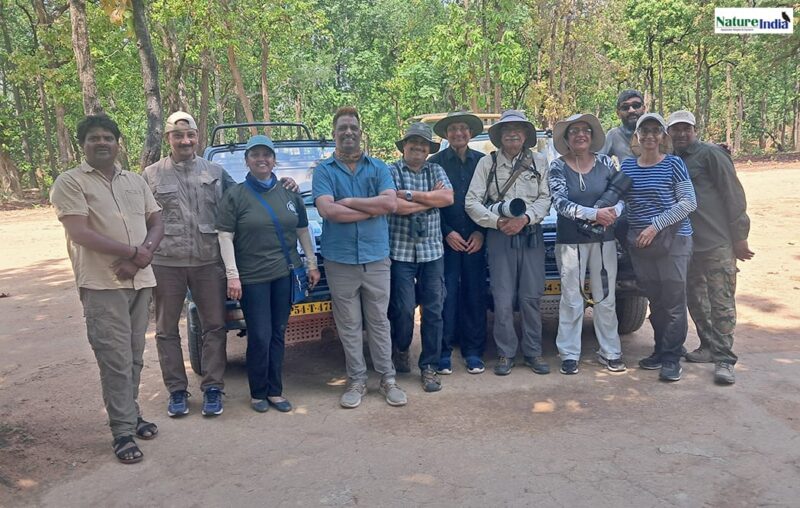
[Most of our wildlife/birding trips are with Nature India, run by Adesh & Mandar, two passionate and professional birders. National parks and sanctuaries are best enjoyed with them, simply because national parks are not just about tigers. With their deep knowledge of flora and fauna, they open a vast world of nature to you, which we enjoy with awe and wonder. Keep track of Nature India’s trips here]

